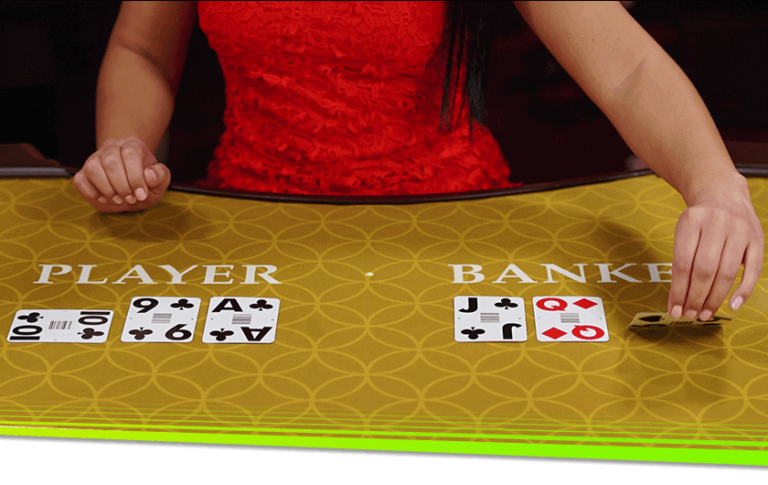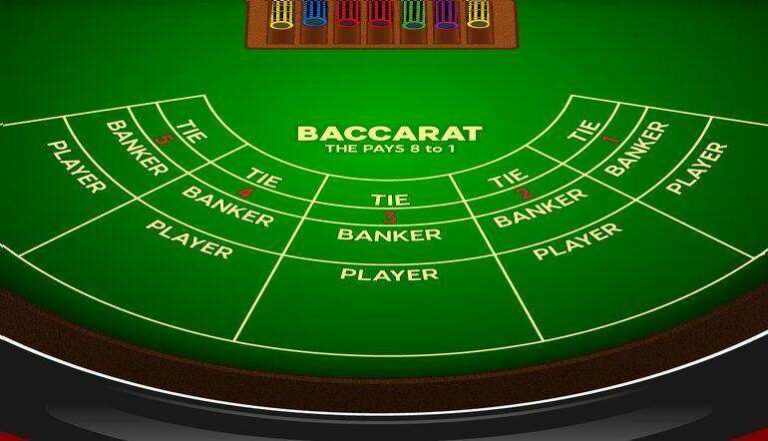
If you have been playing poker for a while, you have used the concept of fold equity on occasion, even if you were not fully aware of what it is.
In the simplest of terms, fold equity is the equity you gain from your opponent folding their cards when you bet.
Simply put, you don’t have to show your cards or have the best hand to win the pot.
In many cases in poker, using fold equity is completely necessary, while in others, fold equity can come in handy and help you win some hands you wouldn’t win normally.
In this guide, I am going to explain the concept of fold equity in more detail, talk about the scenarios in which you can use it, and the best ways to apply pressure and use fold equity to the max.
If you are currently playing too tight, relying more on fold equity in the future will help you increase your winnings and do better at poker in the long run, regardless of the game format you are playing.
Let’s start out by explaining more about what fold equity is, how to calculate it, and how exactly it impacts your bottom line.
- 1

Excellent MTT fundaments and advanced topics
Great structure to keep improving your game
Interactive learning approach with quizzes and homeworks
Score
9.5/10
Show me Review
Fold Equity Explained
Every time you play a hand of poker, you will have some chance of winning the pot. This chance is expressed as equity, with a percentage assigned to each hand involved in the hand based on mathematical calculations.
Your pot odds depend on many things, including your cards, your opponents’ cards, and the community cards that come on the board.
It is a rare scenario that one player has 100% equity in a hand before the river. Plus, many hands are very susceptible to losing by showdown, despite being very strong in relative terms.

Since your equity is so rarely 100%, your opponent folding his cards is often the best scenario you can hope for, especially when the pot is already significantly large and worth taking down.
This is why fold equity is so valuable in poker.
Every time you make a bet in a hand and your opponent folds their cards, you are winning money that doesn’t “belong” to you in terms of sheer equity.
While many bad poker players are happy to see big drawing hands call their all-ins, it is usually a much better scenario to see such hands, which often have as much as 50% equity, fold.
Adding fold equity to our hand equity allows us to increase the total equity in the hand and win more than we would by just checking the hand down and seeing who wins at the showdown.
To put things into perspective, if you imagine your opponents always folding when you make a bet, you would not need to look at your cards.
You could simply win all their chips one blind at a time, which would be a more effective strategy than any other out there.
Since your opponents won’t always fold, it is important to combine your fold equity with your hand equity and make sure you balance things out for optimal results.
How Much Fold Equity Do I Have?
Like many things in poker, fold equity cannot be calculated with absolute precision for several different reasons.
The amount of fold equity will depend on the number of opponents our bet has to go through, as well as the way they play poker and perceive us.
On a most basic level, the more likely our opponents are to fold, the more fold equity we have with our bet.
Yet, this likelihood will depend on more than one thing. We can never know with absolute certainty how someone will play the various hands they could have.
Typically speaking, large bets have a higher chance to work than small bets, especially in tournament situations where losing chips is more significant for your opponents.
Small bets are often called by a wide range of hands, which is why they generate very little fold equity in most scenarios.

It is also important to note that your own table image and your opponents’ tendencies must be taken into consideration as well when trying to generate fold equity.
Some players don’t like folding to bets, regardless of their size. Others may see you as overly aggressive or very tight, which could decrease or increase your fold equity.
I have played with players whose image would allow them to get away with murder (if they were to use it) and others who got called by the bottom pair on a regular basis and still kept losing hands since they were bluffing every single hand.
Figuring out your fold equity can be tricky business. You should be aware of how likely your opponents are to call you and how likely they are to want to lose significant portions of their stacks in certain situations.
Finally, you should also start from the premise that the top of the opponent’s range will call you regardless of all these things.
Figuring out how often they have monster hands is another important thing in deciding whether to bet or not bet.
Calculating Your Fold Equity in Poker
Whenever you make a bet, and your opponents end up folding their cards, you are essentially stealing some of their equity in the hand and adding it to your own.
This is why fold equity can be expressed in a very simple mathematical formula:
Fold Equity (FE) = (Chance Opponents Fold) * (Opponents’ Equity in the Hand)
There isn’t a way to know how much equity your opponent has at any point because you don’t know their cards. There is also no clear way to tell how often they will fold their cards.
What you can know, however, is the equity your opponent’s range has against yours, as well as the percentage of their entire range they are likely to fold.
These calculations are all too difficult and complex to make at the table. The best thing to do is to look into various spots you were involved in after the session and try to figure out the fold equity you had.
After going over many hands and calculating your fold equity, you will become very proficient at estimating the fold equity you can generate by making bets on different boards.
In the end, these estimations will be enough to give you a good idea of the right times to bluff and the times these bluffs can increase your overall equity in a hand.
You can think of your total equity in a hand in the following terms:
Total Equity (TE) = Fold Equity (FE) + Hand Equity (HE)
If you make your bluffs at the right times, you will increase your total equity. However, if the fold equity is not high enough, you will end up costing yourself money in the long run.
Using Fold Equity in Tournament Poker
While fold equity is a concept used in both cash games and tournaments, tournament players can benefit from it a lot more.
Chip stacks in tournaments tend to get a lot smaller in terms of big blinds, which makes every fold you can get from your opponents that much more valuable.
In late tournament stages, a lot of the chips that go back and forth do so by players going all-in and other players either calling them or folding their cards.
For this reason, it is important to know how to utilize fold equity to the maximum in tournament poker and to apply pressure in many different situations.

If you take a look at any push-fold charts for late tournament game out there, you will see that they tell you to go all-in with many hands from many positions once your stack gets below 15 big blinds.
The reason they are saying this is because they rely on fold equity as your most powerful tool in late-game tournament poker.
By going all-in with a wide range of hands, you allow yourself to pick up significant portions of your stack that are already in the pot from the blinds and the antes.
Additionally, you must remember that your hand will always have some actual hand equity when you do get called. This combines with your fold equity to generate enough equity to make such shoves profitable.
Indeed, tournament players must learn how to rely on fold equity even more than cash game players, especially in the late stages of the tournament when the blinds are high, and the antes are in play.
Fold Equity Example
Let us talk about a specific example of when we can use fold equity to our advantage in a typical tournament poker situation.
We are in a deep stage of a poker tournament with 15 big blinds. We are seated on the dealer button holding 9♦8♦, and all players fold to us.
The players in the blinds have 30bb and 25bb, respectively, which means they would lose a significant portion of their stack if they were to call our all-in.
In this spot, the charts say we should shove a lot wider than just 98 suited, but this hand is also one of those we want to go all-in with.
Many bad tournament players don’t understand why we are going all-in and will often call us “bingo” players when one of the blinds snap calls us and shows us pocket aces.

However, the likelihood of the two remaining players having a hand good enough to call us with is very low, making the shove easily profitable because of the fold equity it generates.
What’s even more, many players will not even call with the hands they are supposed to call with. Many will be looking to preserve their stack or move up the tournament payouts table.
For this reason, our 9♦8♦, is actually a trivial shove from the button, with many other hands becoming an easy shove.
Depending on how tight the players in the blinds seem to be playing, you could even go as far as to shove any two cards in this spot, or at least 70% of your range against weak blinds.
Remember, even when you do get called, 98 suited will often have around 40% equity against your opponent’s hand, such as A♥K♣, or A♣Q♠,.
Fold Equity Summarized
Fold equity is a very simple concept to imagine, but one that is not always so easy to apply in-game and actually calculate.
Instead of trying to always make the exact calculation at the table as to the amount of fold equity you have, you should be more concerned with general tendencies.
Most players tend to call less than they should against big bets, which allows you to use fold equity with great efficiency against them.
In other examples, you may be facing a player who really doesn’t like folding cards, which is when you should focus on your hand equity a lot more.
Overall speaking, fold equity is a concept you should always have in the back of your head when playing poker and apply appropriately when you think it can increase your total equity in a poker hand.
Next time you are at the poker table, try to remember that your hand doesn’t have to go to a showdown and that you may be able to win even if your opponents are dealt better cards than you are.
All you need to do is find sharp ways to use fold equity to your advantage and maximize your total equity by avoiding showing your cards too often!





















